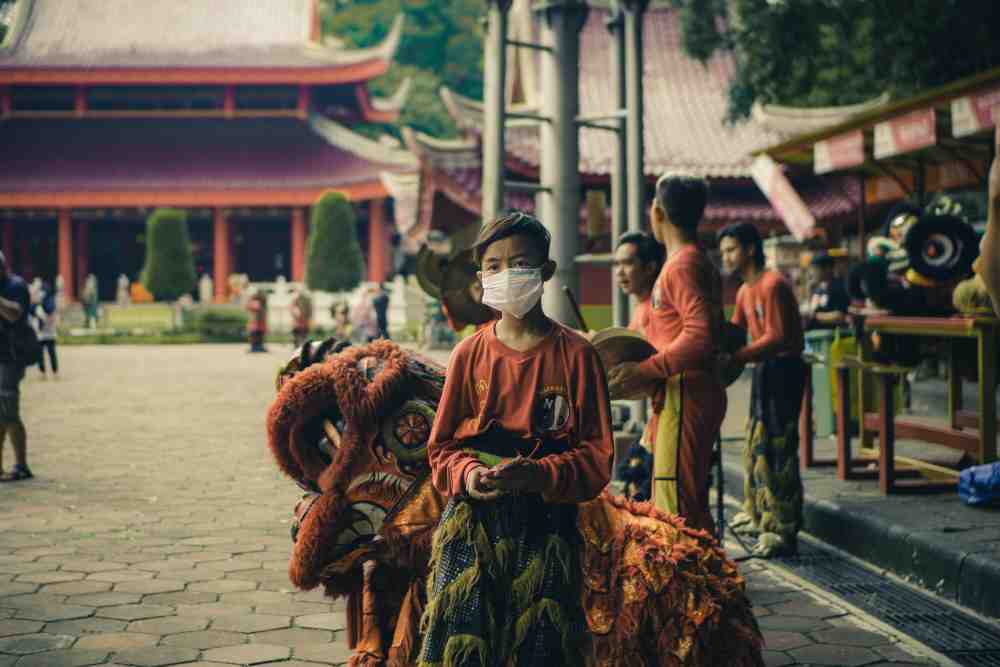Adverse Effect of COVID on Indian Tourism
Because of the Pandemic there has been adverse effect on the Travel, Tourism and Aviation Industries. To prevent the spread of the virus, countries across the Globe have taken several steps like sealing the border, implementing lockdown, and imposing stay-at-home orders, which affected almost 3.9 B people worldwide.
COVID Background – Worldwide
In March’20, the World Health Organization (WHO) declared COVID19 a global pandemic. To prevent the spread of the virus, countries across the Globe have taken several steps like sealing the border, implementing lockdown, and imposing stay-at-home orders, which affected almost 3.9 B people worldwide, i.e., half of the population. Some countries like Italy, India, New Zealand, and the UK imposed compulsory confinement. Others like Germany, Mexico, and Canada notified their citizens to stay at home without enforcement measures. Twenty-six countries, which includes Kenya, Panama, and Chile, imposed a curfew.

International tourist arrivals were declined by 56% globally at the end of May’20 compared to the same period the previous year. As per WTCC (World Travel and Tourism Council), the pandemic is expected to cost the tourism industry at least US$22B, resulting in a loss of 50 M works globally.
Tourism & COVID – India
India is a vast country to explore, which promotes the tours and travel industry. The country offers a portfolio of niche tourism products – leisure, adventure, medical, sports, rural and religious tourism are a few of them. Alongside, India has also been recognized as a divine destination for both domestic and international tourists. In recent times, the country witnessed exponential growth in the Travel and Tourism industry driven by several kinds of travel.
Indian Tourism Industry is one of the largest contributors to India’s GDP. During 2017 the industry contributes 6.7% to the GDP, which further increased to 9.20% in 2018. The Indian Government is also taken various initiatives to promotes Indian tourism, which includes Incredible India, Atithi Devo Bhava, etc. The World Travel and Tourism Council 2020 stated that in 2019, 39,821 M jobs generated by tourism in India, which is 8% of the total employment for 2019. The report also said that the Travel & Tourism Industry contributed 6.8% to the Indian economy, which is INR 16,681 B. As per the trend, this year also the sector was anticipated to grow strongly. But the COVID19 outbreak and its aftereffects like the nationwide lockdown, suspension of international and domestic flights led to a steep decline for the industry in 2020 compared to its previous years. Apart from travel restrictions, the cancelation of events (both personal and business) adversely affected the revenue for airlines, railways, and buses.
According to a study by industry chamber CII and hospitality consulting firm Hotelivate, the complete value chain linked to Travel & Tourism is expected to lose around INR 5 lakh crore (US$65.57B), with the organized sector alone likely to lose US$25B.
Effect on Hotel Industry
After the nationwide lockdown from 25th March, the hotel occupancy fell to 7% in April against 75% a year ago. As per the research by the Confederation of Indian Industry (CII), currently, hotels are seeing an 80-85% erosion in revenue driven by lack of events, room reservations, and restricted travel. According to the Confederation of Indian Industry-Hotelivate research report, the occupancy was at its peak during January 2020 (80%) and 70% in February. But the rate declined 45% during March and then to the lowest to 7% in April. In May, June, July, and August, the occupancy rate was 10%, 12%, 15%, and 22%, respectively.

The research predicts that during December 2020, the rate will be at 35%. The study also states that both the branded and unbranded hotels will incur a revenue loss of around US$19.31 B. The Branded hotels are expected to recover faster in terms of occupancy (32%) over unbranded hotels (27%) as currently, safety measures are the biggest concern for the customers.
According to another report by JLL (Hotel Momentum India), the hotel industry’s Revenue/Available Room across eleven markets dropped by 70-90% in April-June 2020, compared to the previous year. The Revenue/Available Room declined by 52.8% YoY in the January to September 2020 period. Individual market-wise, Mumbai is at the top in terms of Revenue/Available Room, despite a decrease of 71.7% YoY in the April-June 2020 period. On the other hand, Bengaluru witnessed the sharpest decline in Revenue/Available Room at 88.1% decline compared to the same period of the prior year. Other markets like Kolkata (82.6%), Pune (86.2%), and Goa (78.8%) also saw large declines in Revenue/Available Room, according to the report.
Effect on Aviation, Rail & Bus
In March-end, domestic and inter-national flight operations are suspended in India to restrict passenger move-ments and prevent further virus spread. The Airports Authority of India stated a 92% decline in its revenue from INR 2,973 crore during April-June 2019 to INR 239 crore during the same period in 2020. Although from May-end India started its domestic flight operation, it will still take more time to reach its normal state.
In May, India began its domestic operation, with only 33% of its flight capacity, which increased in June and September to 45% and 60%, re-spectively. Finally, in December, it allowed to ramp up its operation to 80% of Pre-Covid capacity.

With the announcement of a nationwide lockdown on March’20, the Indian railway service was also suspended. During Unlock Phase3, the government allowed starting only a limited number of trains to resumes its service. Due toall this suspension of Indian railway’s operation, the ministry informed, a loss of INR 40,000 Cr. estimated in its passenger business for the FY21. The director of Tourism & Marketing Rajni Hasija stated that both the Indian railway catering and tourism corporation, which manages catering, online ticketing, and tourism for Indian Railway running a loss for the first time sinceits inception.
According to Railway Board chairman V K Yadav, the railways is targeting to raise its freight-loading target this financial year by around 50% from the previous year to cover up the loss. Likewise, Air and Rail, Bus services are also received a massive hit due to the pandemic and the several lockdowns. Although the government permitted to resume the operations for both intra and inter-state bus services from June 2020, because of fear of the spreading virus, limited passenger numbers, andgovernment rule about only 50% occupancy, most of the state suspended their intrastate bus movements. Many of the states resume their intrastate bus services after September. Suspension of services for all these months and restriction on passenger numbers, incur an enormous loss for the bus op-eration. As a result, passengers might have to buy tickets 50-70% higher than the pre-COVID time.
Effect on Travel Companies
As per the BOTT Travel Sentiment Tracker report, 81% of travel and tourism companies have seen up to 100% revenue loss, and 15% of companies witnessed up to 75% decline in revenue. The research stated that ~40% of companies operating in the travel and tourism sector are at the risk of complete shutdown over the next 3-6 months.
According to the study, almost 36% of them are going to witness a temporary shutdown. The research also stated that 73% of tour and travel companies al-ready opted for adjustment of the workforce, which includes pay cuts, layoffs, and deferment of salaries, and 67% are gone for steps like the reduction of overheads.
Conclusion
The world will never be the same again, of course, the people will start to travel, but this time more cautiously. While choosing their destination, stay, and transport, people will go for more safe and hygienic options.So, this is the time for the industry to change its ways to operate. Every tourism de-partment, which includes hotels, transports, travel agents, tour operators, etc. needs to follow the SOPs stated by the central and state government. All the SOPs must be visible at the entrance of every hotel, airports, and other offices.
At the en-try of all the hotels, airports, and railways, thermal scanning should be present along with sanitization. Many services are using are either turning into contactless or robotized. An airport like Bangalore already implemented contactless checking and baggage drop facilities to protect its staff and passengers from the risk of COVID19.
Tour companies and hotels nowadays should expect more locals than for-eign travelers. Also, the local tourists are more prone to travel for short day or weekend trips. Hotels/ travel companies can offer small one-day/weekend packagesto attract more travelers. COVID-19 would have a debilitating impact on India’s tourism, which will take time to recover.
The intervention from the government will help the tourism and travel-ing industry upliftment. According to the Country Manager (India, Sri Lanka, and theMaldives) of Booking.com, Ritu Malhotra, although several demands have started coming back, the travel industry might take years to get back to the pre-COVID level. She also added that the Travel industry was one of the first to get hit and would be one of the last industries to recover.
However, on the other hand, research conducted by FICCI and Thrillophilia stated that >50% of people plan to travel in thenext two months, and 33% are planning to travel twice compared to the prior year.



